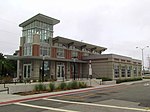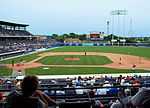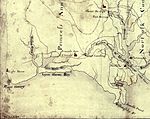Norfolk Terminal Station

Norfolk Terminal Station was a railroad union station located in Norfolk, Virginia, which served passenger trains and provided offices for the Norfolk and Western Railway, the original Norfolk Southern Railway (a regional carrier in Virginia and North Carolina which became part of and later lent its name to the much larger company known as Norfolk Southern in the 1980s) and the Virginian Railway. The N&W, Norfolk Southern, and Virginian's Norfolk terminal location stood in contrast to competitor railroads, such as the Chesapeake & Ohio Railroad, Southern Railway, Atlantic Coast Line Railroad, Pennsylvania Railroad and Seaboard Air Line Railroad which operated out of Cape Charles (Virginia), Newport News and Portsmouth, terminals outside of Norfolk. Customers took ferries or, later in the 20th century, buses from Norfolk to reach those other terminals. The terminal was located at 1200 East Main Street in Norfolk, near today's Harbor Park baseball stadium.
Excerpt from the Wikipedia article Norfolk Terminal Station (License: CC BY-SA 3.0, Authors, Images).Norfolk Terminal Station
Park Avenue, Norfolk Berkley
Geographical coordinates (GPS) Address Website Nearby Places Show on map
Geographical coordinates (GPS)
| Latitude | Longitude |
|---|---|
| N 36.843475 ° | E -76.276117 ° |
Address
Norfolk
Park Avenue 280
23510 Norfolk, Berkley
Virginia, United States
Open on Google Maps










